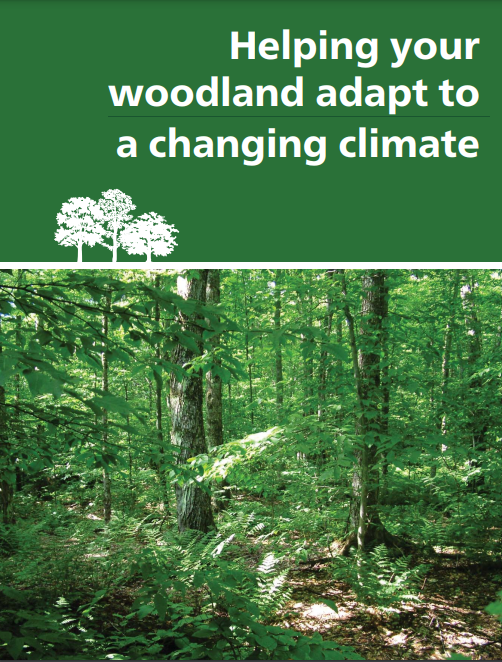Article /
Helping your Woodland Adapt to a Changing Climate

Helping Woods Adapt
This resource was submitted by the Climate Risk Institute for use by the CanAdapt Climate Change Adaptation Community of Practice.
This article is an abridged version of the original text, which can be downloaded from the right-hand column. Please access the original text for more detail, research purposes, full references, or to quote text.
Your woods are always changing and adapting as they grow and mature, or regrow after agricultural abandonment, natural disturbances, or harvesting activities. Events like storms, droughts, insect and disease outbreaks, or other stressors can damage trees or slow their growth. A changing climate may make your woods more susceptible to the problems these events can cause.
What is woodland stewardship? Taking care of your land for the long term while ensuring that it is available for future generations is known as woodland stewardship. To become a good woodland steward, the fi rst step is to learn more about your woods through online educational resources: http://extension.umd.edu/woodland.
The next step is to contact a forester (see inside cover). Walking the woods with a forester will help you understand the options and opportunities to improve the health of your woods and plan for climate change.
The third step is to identify your goals and objectives. For example, do you want to use your property to generate income, or are you more interested in attracting wildlife, or protecting rare and endangered plants and animals?
A forester can also assist you with the fourth step, which is to develop a forest stewardship plan to help you achieve your goals and objectives.
Your property can make a difference
Private landowners currently own 76% of all forestland in Maryland and are also the first to see any changes in their woods over the years. Keeping an eye out for changes and seeking assistance will help you make wise decisions. Have you noticed trees dying or strange insects? These are only two of many visual clues that may prompt you to learn more about your woods.
The average size of woodland ownership in Maryland is 9.6 acres. Whether small or large, every property counts and the cumulative decisions taken by you and 150,000 other private landowners will determine the future productivity, health, and biodiversity of Maryland’s forests.
Citation: Culbreth, T., Dawson, N. S., Kays, J. S., Okay, J., Twery, M., Griswold, M., and Butler, P. (2013). Helping your woodland adapt to a changing climate.
